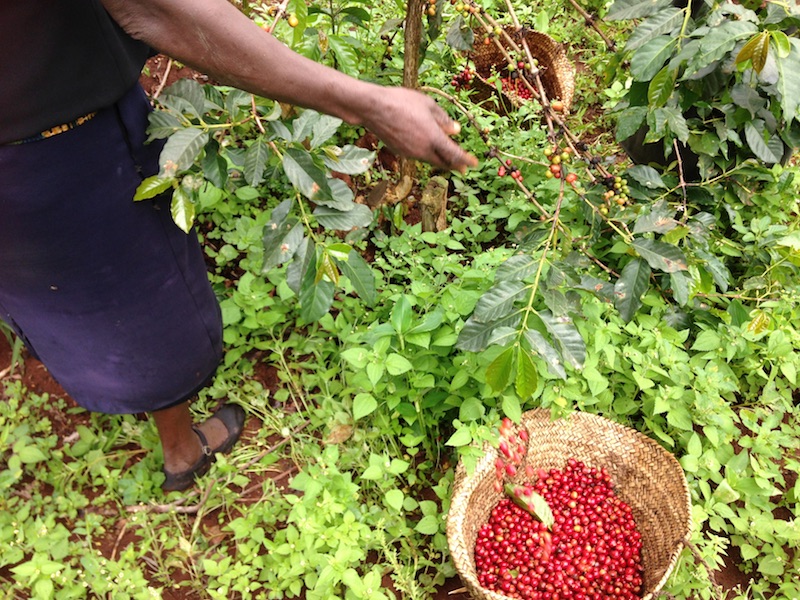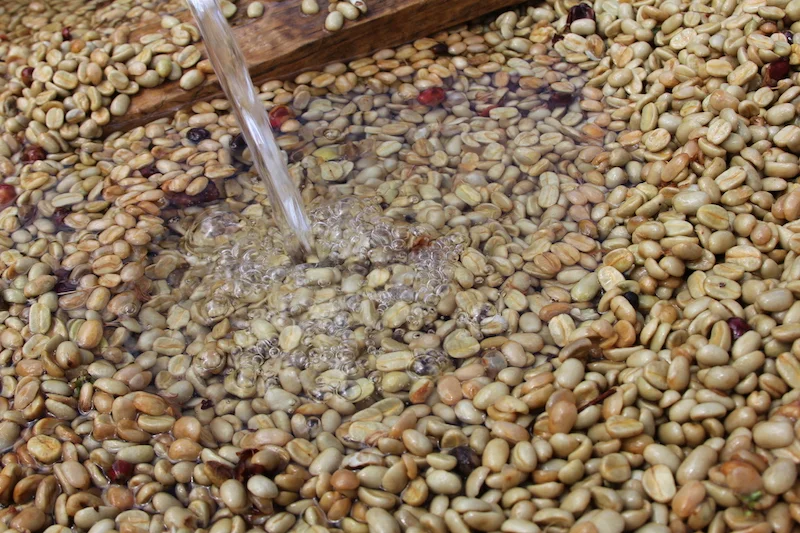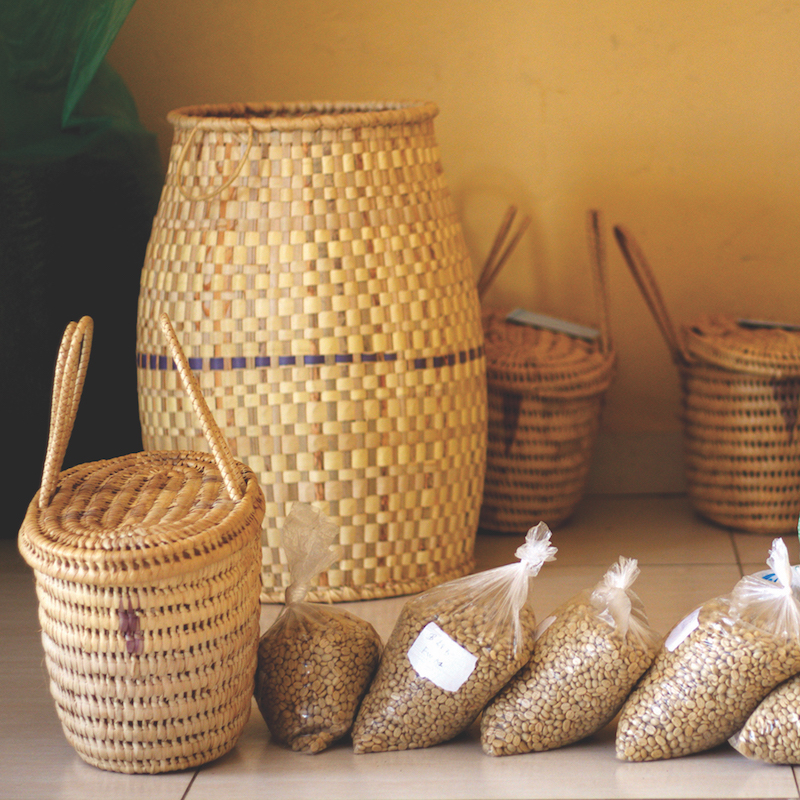Coffee from Seed to Cup
Fifteen steps to bring you delicious coffee
Every day, we serve people coffee, putting a tremendous amount of care into each cup. But the barista’s act is the penultimate step in a long, and frankly arduous, journey. We can’t help but think that a daily coffee is actually a miracle—the result of thousands of little acts done right. Here are the fifteen steps that matter the most.
1. Find the right land
The kind of coffee we primarily buy, arabica, needs rich soil, a temperate climate with sun and rain, and elevation—the higher the better. Coffee farmers adapt to environmental conditions, but the basic needs remain the same.
2. Plant a seed
We have to agree with Molière on this one: “Trees that are slow to grow bear the best fruit.” The best fruit comes from trees that are at least three to five years old. Some farmers have trees that are nearly 100 years old.
3. Watch the coffee blossoms turn into fruit
Blossoms of different cultivars vary in look, but all emit an alluring jasmine-like scent. Tens of thousands of flowers may cover a tree—harbingers of an abundant yield. Coffee cherry starts out green and then turns a deep scarlet when ripe.
4. Pick only the ripest cherry
Pickers search the same tree many times over the course of several days, or even months, picking a coffee cherry when it is scarlet, “like a ruby in a tree.”
5. Choose a processing method
Removing the coffee seeds (aka beans) from the coffee cherry takes work. There are a few ways farmers do this. The two main methods used around the world are washed processing, also called wet processing, and natural processing, also known as dry processing.
If the coffee is washed (the more common method), then the cherry goes through a pulping machine, where the fruit’s outer skin is removed, but the fruit flesh remains. These pulpy seeds are then soaked, or fermented, to help remove the clinging bits of fruit, scrubbing the seeds clean. Washed coffees differ in flavor depending on origin, but common to all good-quality washed coffees is clarity and smoothness.
Natural processing is the older way of removing coffee seeds from cherry. No water is used in this method. Instead the entire fruit dries on racks beneath the sun before the coffee seeds can be removed. This process takes many days, even weeks. To do it well, producers monitor cherry’s moisture levels, frequently turning piles of red cherry over to prevent mildew. When done with utmost attention, naturals are exquisite, fruity with a syrupy mouthfeel because of the prolonged contact between seed and fruit.
6. Ferment the cherry
Coffee, like chocolate, vanilla, or sauerkraut, is a fermented food. Depending on the climate and farmer’s preference, fermentation can take a few hours or a couple of days, and can happen when the cherry is depulped or whole.
7. Wash and dry
For washed-processed coffee: after the beans have been depulped and undergone fermentation, they’re rinsed and dried, either on raised beds, a patio in the open air, or in a mechanical dryer.
8. Dry mill
Dry milling occurs a few months after natural or washed processing, once the moisture levels in the coffee beans has evened out. Then, the remnants of fruit left on the coffee beans—whether it’s the thin and friable layer of parchment skin on washed coffee or the entire dried fruit on natural coffee—is removed.
9. Source
Depending on the producer and the country in which we are buying, this step happens at all different times in the supply chain. Oftentimes we get our coffee from producers we’ve long admired, whom we see as partners, and have known for years. Other times, we are forming new relationships, or working with exporters who’ve done the groundwork to work with producers in regions too remote for our team to visit.
In countries where national restrictions dictate how producers interact with roasters, like Ethiopia or Kenya, we often buy at the point of export through nationally regulated systems.
10. EXPORT
Most of the green coffee we buy travels by boat and arrives in burlap coffee bags. Some delicate coffees are air-shipped, so we can get them here as fast as possible for optimal freshness and flavor.
11. Test-roast the green coffee
We have one person whose sole job it is to test all of the green coffee that comes through our door, even samples of coffee we don’t buy. Only once we do a test roast and taste the results do we know how a coffee really tastes, and how we might want to use it in our cafes.
12. Roast and test for quality
Our roasting team figures out the optimal roast time for a coffee, and then tests every subsequent batch to make sure the coffee is consistently delicious.
13. Grind to order
Coffee degrades quickly once ground, which is why we recommend grinding coffee only when you’re ready to brew a cup. In our cafes, whether for an espresso drink or a pour over, baristas will make microadjustments to the grind size throughout the day so that the coffee is most evenly extracted.
14. Brew with care
Whatever your preferred method, brewing coffee well takes a few minutes of full attention. We especially love the pour over for the clarity it brings to a coffee that has traveled so far to get here.
15. Share with a friend
Coffee takes a lot of work, but this is the moment that it's all for. One delicious cup—to savor.















